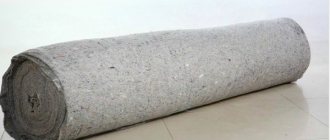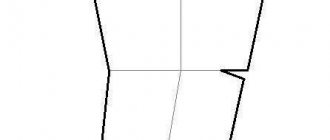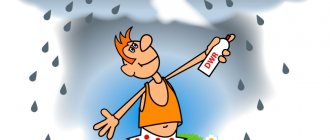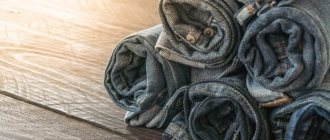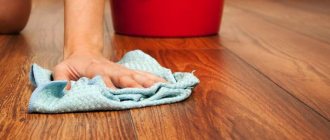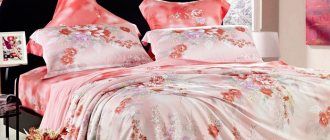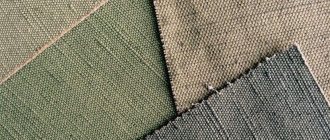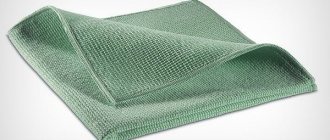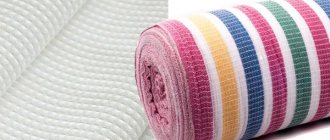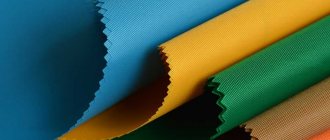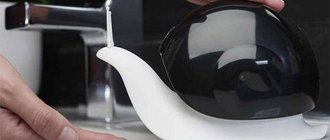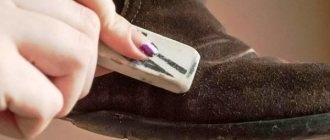We will tell you what rags are and where they are used, and what they consist of.
A rag is not a dirty rag that was used to wipe something and throw it away, it is a clean piece of worn or waste textiles, which is later used for wiping something in everyday life or for industrial purposes. Most often it is made from old household items that are no longer suitable for wear due to their appearance.
Old items already have a hole or the color of the item is no longer as rich as it was originally. This item is perfect for rags . Have you already decided that you won’t wear it, but it’s a pity to throw it away, and there’s no one to give it to, or it’s no longer suitable for wear? This is the so-called linen rag . It is valued more because it is made from natural fibers, often cotton fabric. It absorbs water, oil and dirt well. The main thing is that there are no buttons or snaps on the scraps of fabric, but a solid piece of fabric, then this is a cleaning rag.
Remains of textiles in factories or when sewing in an atelier, if not recycled, can be used as a cleaning material. But it can be made of synthetics, or it can also be made of cotton, depending on what the scrap of fabric remains from, and such rags are considered completely new.
What is a rag
The concept of rags is very broad, but basically it means an old rag and is used as a cleaning material. Also, this material is used depending on the range and specific properties. These parameters may change the appearance of the finished raw materials and the packaging method. A rag is a piece of cloth or a whole bundle of threads (tangle) that is used to wipe off various types of dirt and moisture.
Each individual type of rag is assigned its own specific GOST, which indicates the standards and regulations applied to it.
Marking of cleaning equipment at catering establishments
It is not regulated by a clear purpose of colors. Therefore, each enterprise can independently designate its own colors for each zone. For example, red is for cleaning a meat shop, blue is for a fish shop, green is for a vegetable shop, yellow is for a flour shop. Employees often wonder what color equipment is used to clean the distribution area ? – you can use green color, it can also be used for cleaning equipment of bar counters and tables where food is consumed.
Another frequently asked question: is specially marked cleaning equipment required for refrigerated rooms ? – the answer is definitely “Yes!”, for cleaning each group of premises (hot and cold shops, meat and fish shops, flour and confectionery shops, semi-finished products preparation shops, procurement shops, non-refrigerated warehouses, refrigerated chambers, auxiliary premises, sanitary facilities ) allocate separate marked cleaning equipment, in accordance with the requirements of SanPiN 2.3.2.1324-03 “Hygienic requirements for shelf life and storage conditions of food products.”
What kind of rags are there?
As mentioned earlier, rags are divided according to two characteristics: the component part in the briquettes and the size. There are also various types of these raw materials on the market. Rags are sold in several types.
The largest segment of this industry is occupied by standard rags. First of all, this is due to the low cost, since the composition can contain various fabrics that differ in their characteristics. Here up to 15% may contain synthetics, which practically do not absorb moisture.
The name “colored cotton” itself shows what kind of rags are produced here. The composition consists mainly of only 100 percent cotton in multi-colored shades.
“White Cotton” defines rags made from natural raw materials, but has the white color of all raw materials.
Linen rags are made from bed linen.
Knitted rags are made from scraps from knitting production.
Non-woven single-stitched fabric. It is divided into two types, depending on the location of the seams: every 5 millimeters or every 2.5 millimeters. These rags are sold in rolls. Experts recommend thoroughly moistening and wrung out the fabric before use. In this form, it best absorbs and removes dirt.
Waffle fabric. Made only from 100% cotton, it is distinguished by high technical characteristics and its appearance. This fabric is also used for sewing budget towels.
Today, terry, which perfectly absorbs moisture, has also been used as a cleaning material. However, lint loss is possible here, which is why the area of use is slightly narrower than that of other types of similar products.
Manufacturing standards
According to GOST 4643 75, rags cannot be synthetic. Either pure cotton or cotton with a small proportion of synthetics.
The fabric is made from used or defective products. Rags can be obtained from scraps of clothing and bedding of a certain size.
The rag can be of two sizes:
- shreds 70*80 cm, suitable for cleaning premises;
- shreds 40*40 cm, medium size, for removing dirt particles from hands and equipment.
The fabric is supplied in packaged briquettes sealed with polyethylene. Briquettes are formed into bales whose weight can reach 100 kg.
The material should not be rotten or have any traces of dirt and rot.
Range
Today there is a wide range of this product on the market.
The most sought after and popular is the prostitute. This material has various defects that appear during the production of threads or yarn. The main ones are knots on the threads, thinning or thickening, and ruptures. Once these discrepancies are detected, the weaving process is stopped and the defective threads are removed. Subsequently, the tangle itself is produced from the skeins. They are divided into several basic standards: short up to 10 centimeters, long and starched. Also in the weaving process there is a need to trim the edges of the material. These trimmings are connected to the braid. The putanka is sold in special briquettes, the weight of which reaches 250 kilograms.
Wiping rags are the most voluminous of this product category. It is divided into two categories: new rags and second-hand ones. The first assortment of these goods is produced at a weaving enterprise, and the second is old clothing that has become unusable. Pieces of fabric and trimmings always remain here. As a rule, they are no longer suitable anywhere else and are sent to rags. These pieces can be of various sizes: from 5 square centimeters to large pieces of at least A4 size. Second-hand clothes are made from old clothes that are no longer in demand. If a direct purpose is not found for it, then all things are cut into small pieces and briquettes are formed from them for further transportation and processing.
A separate type of rag is called a technical napkin. As a rule, it has a regular shape of about 40 centimeters on each side. First, such shreds are folded into bundles, and then rolled into large rolls. Almost any materials can be used for production, but preference is given to cotton fabrics: calico, chintz. Technical napkins are divided into two types: seamless and stitched. Models without a single seam are in greatest demand, as, according to experts, they are distinguished by their durability. Stitched types differ in the number of seams and the fewer there are, the better the quality of the resulting product.
Marking of mops according to SanPiN
Should be applied to the handle or handle of the mop. You can, of course, mark with oil paint or a marker, but this is an unreliable and outdated method, since the paint and marker quickly rub off from the surface. Today, handles from ]TTS[/anchor] (TTS) are developed taking into account the requirements of SanPiN and are marked with a cap of a certain color at the end of the handle. Another advantage of such handles is their ergonomics - they are telescopic and adapt to the operator’s height.
Subtleties of rag production
Modern weaving and knitting industries are struggling for the rational use of available raw materials. After all, during the work process, a huge amount of various waste, trimmings and unclaimed scraps are generated. If used irrationally, this raw material is most often simply thrown away. Thanks to the innovation, production waste is sorted and divided into different types of rags, which are subsequently sold. Here, the percentage of rags produced is about 10% of all raw materials sent for processing. Suppliers for the production of rags can be not only industrial production, but also other companies and organizations. This is how army underwear, which is highly hygroscopic, comes here. End-of-life clothing is the largest part of the manufacturing raw material for rags. At the second stage, incoming materials are sorted. It is divided not only by size and color, but also by the material used. At the same time, everything that is not useful for the production of rags is immediately removed: buttons, feathers, cotton wool and much more. In order for the produced rags to comply with sanitary and hygienic standards, all material needs special antibacterial treatment. To do this, sorted raw materials are treated with disinfectants and boiled. The main ingredient in these products is formaldehyde. The very last stage of rag production is cutting the material into even pieces, which should be convenient to use.
At the very final stage, all rags are marked and packed into containers that comply with GOST. Most often these are briquettes weighing from 50 to 250 kilograms.
Wiping rags
Wiping rags are one of the most popular and numerous in the industry. It has high technical characteristics:
- most often 100% cotton is used for production;
- it perfectly absorbs moisture and other liquid pollutants;
- the structure of the rags is soft and durable;
- there is no fittings typical for sewing and knitting production;
- the dimensions are convenient to use due to their dimensions;
- there are no traces of life activity: rotting or burning;
- the cost is low and accessible to everyone.
Wiping cloths are divided into two main assortments: second-hand and new. Of these two types, new rags are in particular demand, since their production uses hygienic fabrics that have excellent characteristics. The resulting rags are used in industrial production, as well as for home use.
Description
For some people, the word “rags” is associated with some kind of old stuff, rags, unnecessary and dirty. However, the rags that are used for the needs of modern enterprises are not like that at all. Textile waste is characterized by cleanliness, safety, compliance with quality standards and decent appearance. As for laundry rags, they are made from household textile waste, so they are especially soft, hygroscopic and safe.
Of course, you can’t make anything out of this material (although some people use it to make various crafts). But for cleaning, wiping, putting things in order and other functional and practical tasks, it is indispensable. But you can see what a non-woven rag fabric looks like here.
Linen wiping rags are clean scraps of previously unused fabric. These scraps are properly processed and are waste from the textile industry.
But the information at the link will help you understand what the GOST 4643 75 cleaning rag looks like.
High-quality laundry rags are indispensable for most modern industries: they are useful in factory workshops, car washes, catering establishments, and in many other cases.
Features and Benefits
What are the characteristic features and advantages of this type of rag? Linen cleaning rags are a completely natural material. It is made of high quality cotton fabric. It is very soft, so it is pleasant to use, the material does not irritate the skin.
This material is characterized by increased hygroscopicity. This quality makes linen rags indispensable in those enterprises and industries that are closely related to the consumption of large amounts of water.
The fabric is highly durable. Thanks to this property, it lasts a long time and easily withstands repeated washings without loss of technical characteristics.
The material contains no synthetic fibers, which makes the fabric completely natural, ensures its hygroscopicity and safety.
The sizes of the flaps are selected in such a way as to optimally meet the standard requests and needs of customers.
Thanks to special treatment, the material does not rot, the fibers remain intact for a long time. Linen rags retain their properties in both dry and wet conditions. This makes it especially convenient to use.
The fabric does not deform, does not lose shape, and does not stretch. If the rags are colored, then it should be noted that the paints used are high-quality, do not fade or fade. The rags are packaged in a convenient way, optimal for storage and transportation. It is also worth paying attention to how white cotton rags are used.
Compound
This is one of the most important parameters for characterizing linen rags. Nowadays it is customary to use rags consisting entirely of cotton, or the admixture of synthetics should not exceed 15%. A larger amount of synthetics is unacceptable, since artificial fibers significantly worsen the hygroscopic properties of the fabric. 100% cotton rags are preferable.
Compliance with GOST
Without a doubt, the quality standards adopted back in Soviet times are the most stringent, and therefore most buyers trust products with this marking.
Linen cleaning rags are also produced in accordance with GOST, so this material can be considered high-quality and safe.
It will also be useful for you to see what cleaning rags look like and how they are used.
Compliance with GOST means that the product is manufactured:
- in compliance with technical regulations;
- in compliance with all safety requirements;
- sorted, processed and packaged exactly under the conditions specified by quality standards.
For the quality characteristics of rags, the following standard is used: GOST No. 4643-75. It has been operating since 1975. But it must be said that many textile enterprises are returning to a less strict standard - TU-8189-018-01877509-01. Most often, it is the latter that can be observed on briquettes with rags ready for shipment and in their accompanying documents.
It should be noted that if you purchase rags made in accordance with GOST, this guarantees high quality products. The material will last a long time, will not crumble after the first use, and no artificial impurities will be found in its composition.
According to GOST, rags undergo mandatory sorting. The flaps are distributed according to color, strength, size, and type of fabric. As a result, the buyer receives packaging of exactly the material that best suits the needs of his enterprise.
But how to properly use floor rags and what they consist of can be seen here.
Methods and place of application
Wiping rags have a fairly wide range of applications and uses. It is especially in demand at industrial enterprises: Russian Railways, mechanical engineering, shipbuilding, chemical and processing industries, as well as many others. An important place of application is when grinding and polishing various surfaces.
The place and method of using rags depend on the materials used in production.
For cleaning floors, preference is given to non-woven single-stitched materials or thread-stitched fabric. This happens primarily due to the density of the material. This fabric is very dense and can cope with any stains, even very stubborn and dried ones.
To remove various greasy and oily stains and lubricants, rags are mainly used. Sometimes technical napkins and confusion can be used here.
To remove ordinary water, you can use any type of rag: from waffle cloth to mud cloth.
In paint shops, gauze is considered the main type of rag, as it has the most suitable technical characteristics. This material perfectly absorbs any liquid (both thick in consistency and liquid). However, the cost of such rags is a little high for use and therefore most often gauze is used for its intended purpose for medical purposes, and for wiping purposes it is customary to use samples or edgings of this material.
For cleaning the house, housewives prefer waffle rags, as they have an aesthetic appearance and cope well with any dirt.
Wafer cloth is also used to wipe hands.
For what purposes is the fabric used?
The rag is used:
Cleaning working equipment from various types of contaminants
Filler for various items (take the same punching bag)
Reprocessing and production of accessories (bags, decor)
Sewing clothes. The scraps are connected to each other and painted.
Polishing various surfaces and removing traces of contamination (dust, paint, oil, dirt)
Washing floors and dishes. Used at home and in educational institutions.
Buy rags
Today it is quite easy to purchase rags. There is no need to search for suppliers for a long time, since many knitting and weaving enterprises independently strive for the rational use of these resources and put them on the market.
It has become especially convenient to purchase this product in bulk, since its cost is not so high. You can order rags on specialized websites that offer a wide range of these products.
To choose and purchase the appropriate type of rags, you must first decide for what purpose it is needed. Next, find out which companies offer similar products in your region, and at what prices. It is important that the rags comply with the accepted GOST standards, since the technical characteristics and properties depend on this. After all, no one will be pleased to purchase rags that do not absorb moisture at all and do not cope with the task assigned to them.
Price
The cost of this cleaning material is low. A kilogram of standard size flaps will cost the buyer from 43 rubles. This is if the flaps are colored. And if you want a pure white or light-colored option, then the price increases to 61 rubles per kg.
It must be said that fabric, of course, is not sold by the kilogram . Enterprises need cleaning material in large quantities, so it is sold in packages of 10 or 20 kilograms. In addition, sellers usually offer 120 kg bales of material. Naturally, such a large volume is sold at a reduced price.
It is clear that it is most profitable to buy goods in bulk. In this case, sellers usually provide good discounts. Such a purchase is beneficial to both parties: the buyer purchases a lot of consumables at a low price, and the seller, due to quick turnover, also does not lose.
We looked at the features of laundry wiping rags. As you can see, the range of applications of this material is quite wide, and its compliance with GOST indicates proper quality. Therefore, for the needs of your enterprise, feel free to choose this type of wiping textile, thereby ensuring convenient, comfortable and high-quality production operation. You can purchase measured and weighted flaps at sewing factories in Ivanovo.
